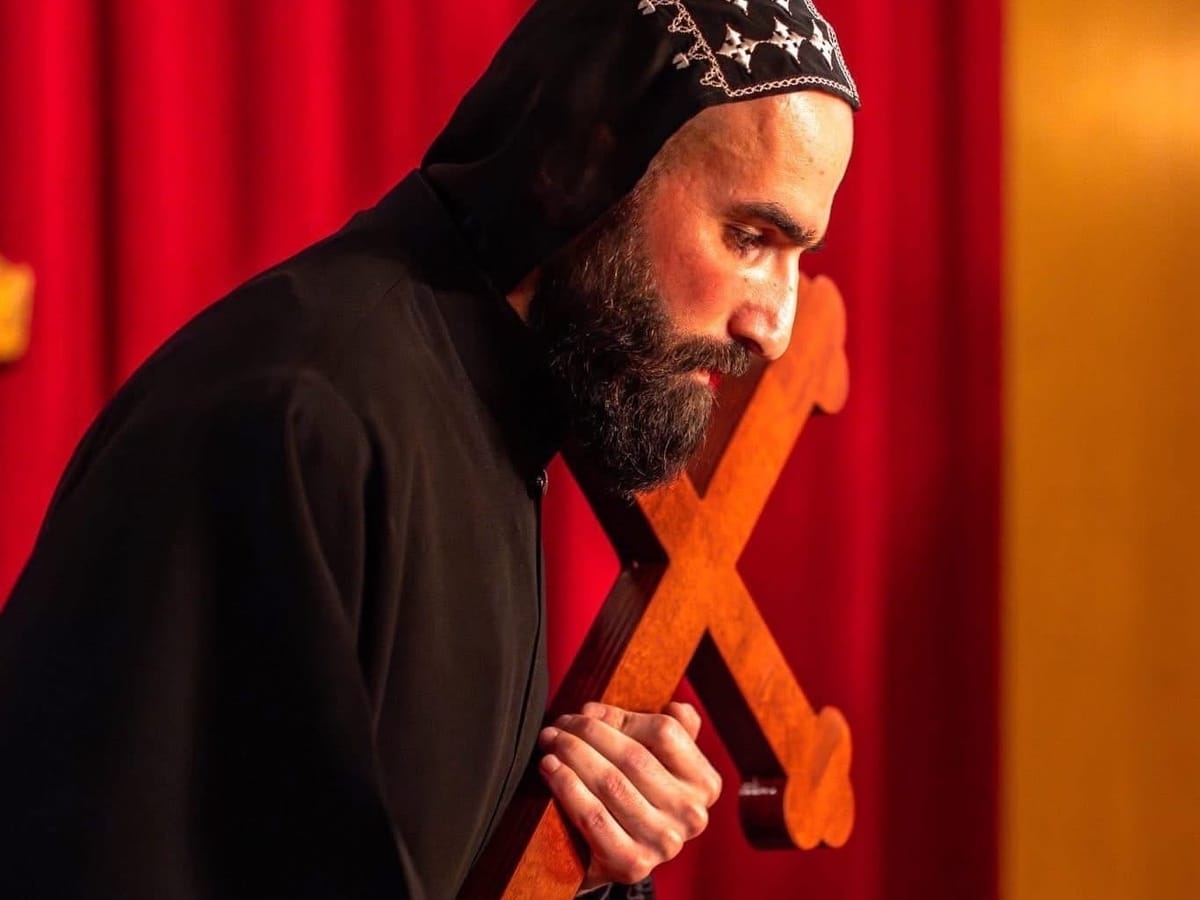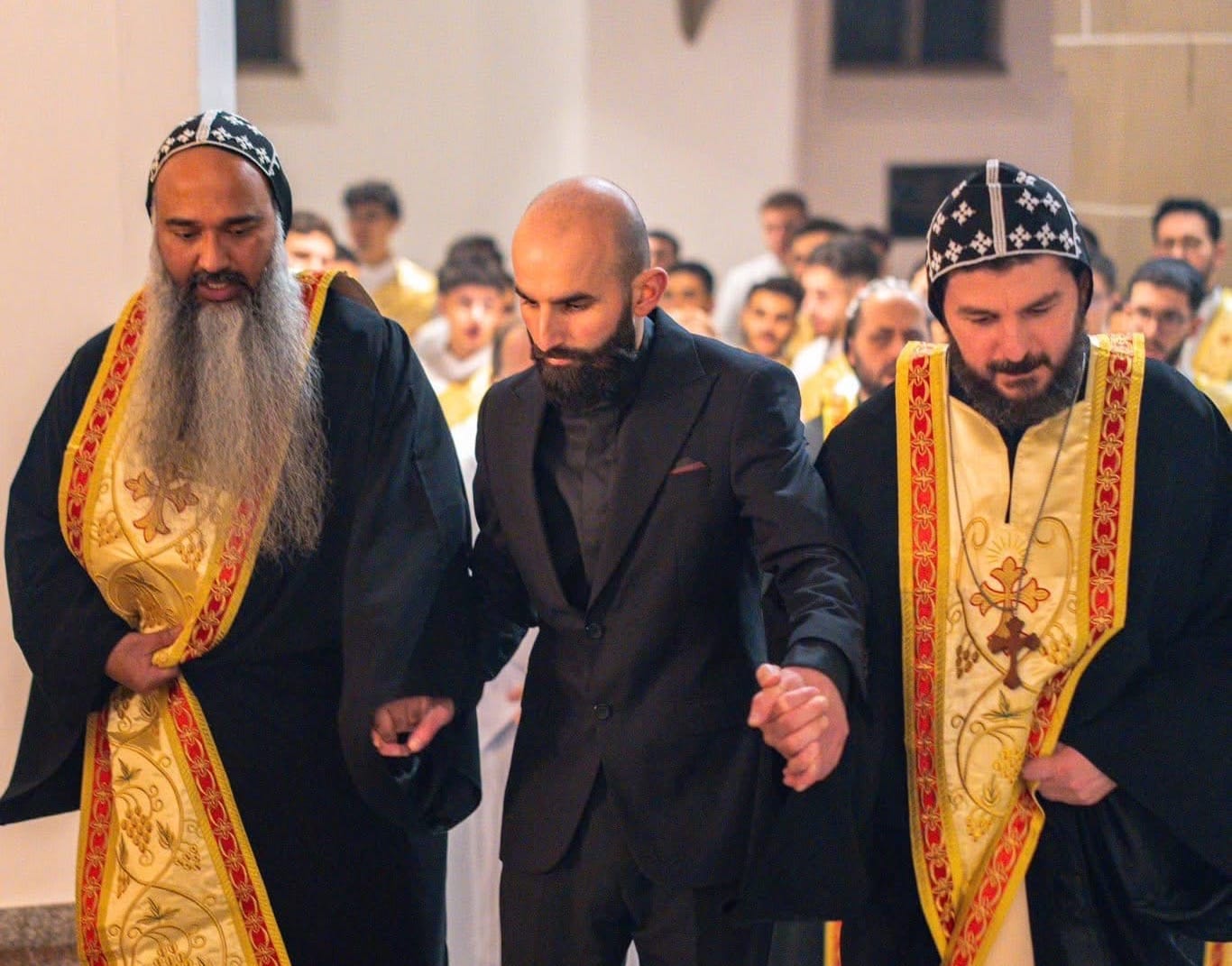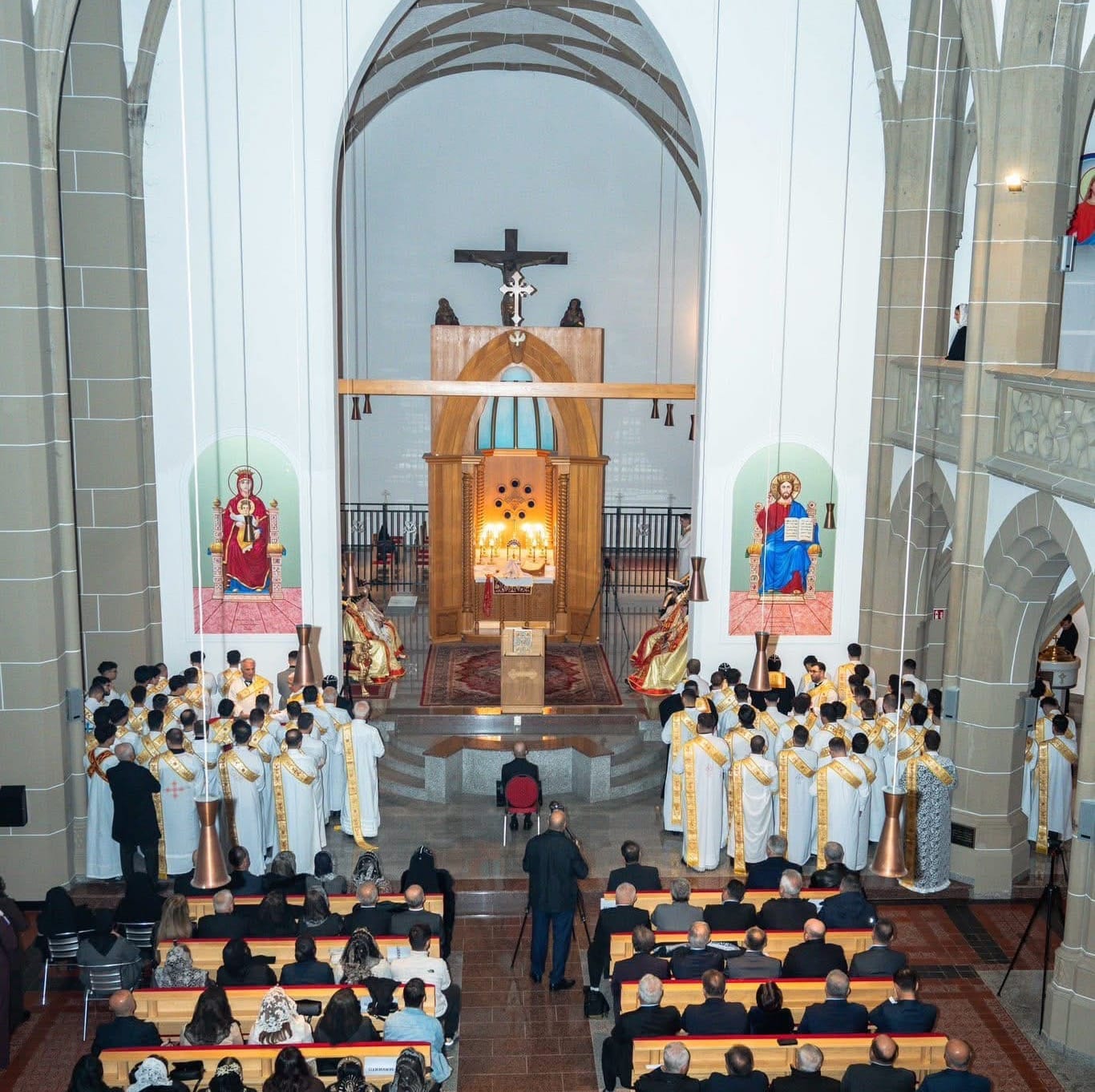Assyrian monastic tradition revived in Europe with rare ceremony
In a historic first for the Mor Jacob of Sarug Monastery in Germany, a young Assyrian has been vested as a Syriac Orthodox monk, marking a symbolic renewal of Assyrian monastic life in Europe.

In a rare and solemn ceremony, a young Assyrian man put on the monk’s robe as he embarked on a life dedicated to the Syriac Orthodox monastic tradition. The vesting took place on 14 November in the central German city of Warburg, home to the Syriac Orthodox Mor Jacob of Sarug Monastery.
The event, described as one of special spiritual significance, marked the monastery’s first-ever monastic vesting. According to a press release from the Syriac Orthodox Church of Antioch in Germany, the ceremony was attended by high-ranking dignitaries, including bishops and faithful who had traveled from across Europe.

From Assyria to Germany
The young man now joining the monastery’s permanent community is Subdeacon Dimet Malke, 29. Born and raised in Qamishli in Syria's Assyrian region, Dimet fled the Syrian war a decade ago and sought refuge in Sweden. There, he devoted himself to the Church, especially through service in the Sunday Church School.
Through these years of dedicated involvement the desire to embrace the monastic path took shape. For the past three years, he has undergone clerical formation at the St. Jacob of Sarug Monastery, living according to the pillars of monasticism: prayer, fasting, and work.
The ceremony was led by Mor Philoxenus Mattias Nayis, Metropolitan and Head of the Syriac Orthodox Archdiocese of Germany. Himself born in Sweden, the bishop’s own journey, into monastic life and eventually to episcopal responsibility in Germany, echoes the migratory and spiritual journey embodied in Brother Dimet’s story.

The significance for Assyrian monasticism in Europe
While the ceremony marks a personal transformation for Dimet, its meaning extends beyond his own calling. His step into monastic life is seen by many as a sign that Assyrian monasticism can take root anew even beyond Assyria, the ancient cradle of Christianity.
Assyrian monasticism, which developed from the 4th century onward, is known for its strong emphasis on individual asceticism, theological reflection, and disciplined spiritual practice. What began with solitary ascetics soon grew into structured monasteries, ultimately influencing Christian monastic traditions worldwide. Its legacy can even be heard linguistically: the word abbot, denoting the head of a monastery, stems from the Assyrian word abo/aba – father.
Patriarch Aphrem Karim II of the Syriac Orthodox Church has long expressed a desire to nurture this ancient tradition in Europe. For several years, he has personally overseen the development of a small monastery in Sweden, located in a secluded area between Nyköping and Norrköping. Named Korsets Kloster (The Monastery of the Cross), it is intended both as a functioning monastery and as a spiritual retreat center for young Assyrians of the Syriac Orthodox Church.
“We need to fill it by giving the young a possibility to grow spiritually, get together, pray together and read the church fathers. It is very important for us – and to talk about one’s faith and how one grows in it,” the Assyrian patriarch said to the Swedish daily Svenska Dagbladet during a visit in September this year.
For many faithful, the ceremony in Warburg stands as a hopeful sign – a beginning point, perhaps, for a renewed flourishing of Syriac Orthodox monasticism across Europe.




